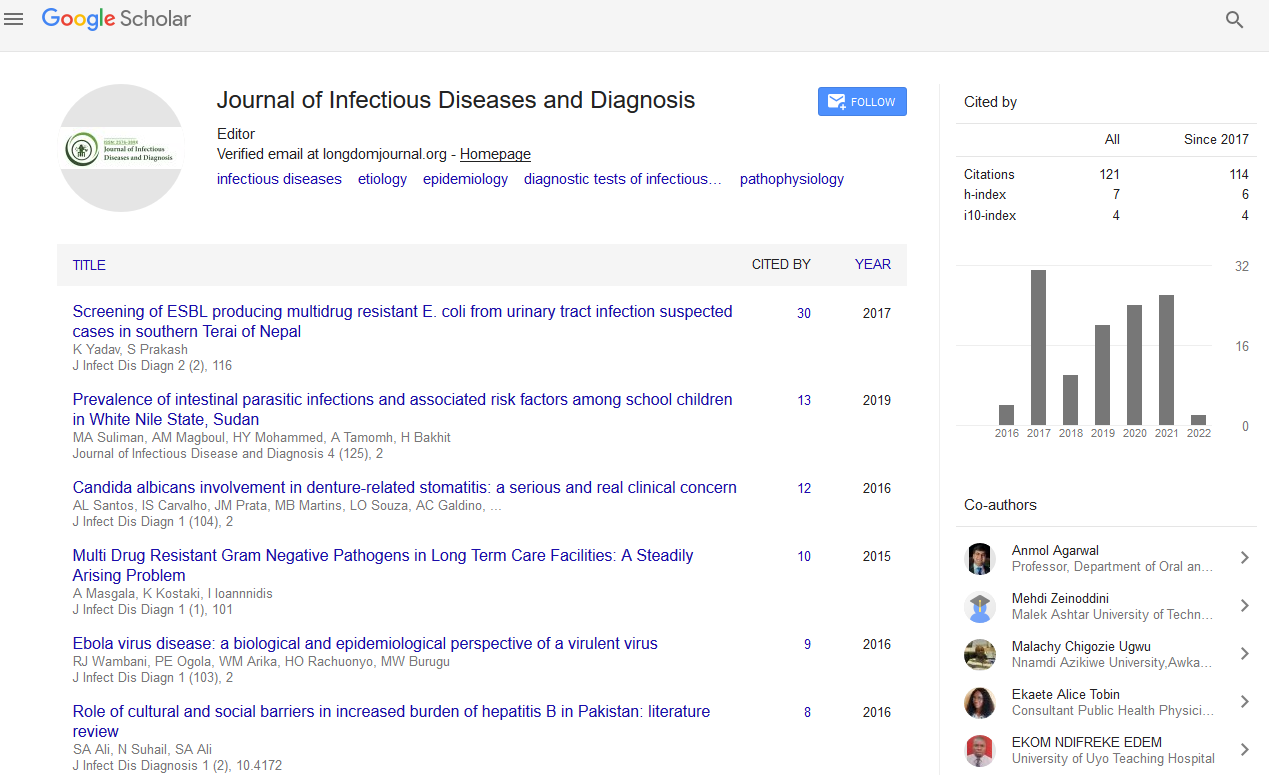Indexed In
- RefSeek
- Hamdard University
- EBSCO A-Z
- Publons
- Euro Pub
- Google Scholar
Useful Links
Share This Page
Journal Flyer

Open Access Journals
- Agri and Aquaculture
- Biochemistry
- Bioinformatics & Systems Biology
- Business & Management
- Chemistry
- Clinical Sciences
- Engineering
- Food & Nutrition
- General Science
- Genetics & Molecular Biology
- Immunology & Microbiology
- Medical Sciences
- Neuroscience & Psychology
- Nursing & Health Care
- Pharmaceutical Sciences
Abstract
Unique Epidemiological Patterns and Origin of the Outbreak of Human Infection with H7N9 AIV in China from 2013 to 2015
Dezhong Xu, Yong Long, Haixia Su, Lei Zhang, Yuhai Zhang, Xiaofeng Tang, Yuxian Xu, Jie Gao, Yang Zhang, Rui Xu, Bo Wang, Weilu Zhang, Liping Duan and Jielai Xia
Background: Novel Human Avian Influenza (H7N9) (h-H7N9 AI) occurred in China in February, 2013 and continued today. Although there were many reports on epidemiology, the reservoir and origin have not been confirmed.
Methods: Until April 2015, 628 cases collected from WHO. Descriptive epidemiology was used to compare differences between h-H7N9 AI and other h-AI with statistical analysis.
Results: Compared with only 18 cases of h-H5N1 AI located just in Hong Kong during 7 months, 571 cases with 212 died (37%) occurred up to February, 2015 and only limited in the mainland. It is suggested h-H7N9 AI were fully different from other h-AI, and may belong to very new type of “Natural Focus Disease (Zoonosis)”. H7N9 AIV was not detected in farms and wild birds in China before and during the early phase, and quite different from h-H5N1 AI occurred in geese of Guangdong in 1996 and in farms in 1997. So, h-H7N9 AI should have occurred in countries with it in birds and poultry for long time, rather than in China. The mean age was 62 years old in the beginning, then decreased to 59.0, 58.0 and 2 years later to 54.8, with correlation of the epidemic-lasting days (r=-0.953P=0.047). It indicated that the senior had no specific immunity and H7N9 AIV was absolutely new virus and never existed in China.
Interpretation: We have creatively identified that h-H7N9 AI is with unique pattern based on abnormities in incidence and distributions and should has occurred in another country with it for long time.


